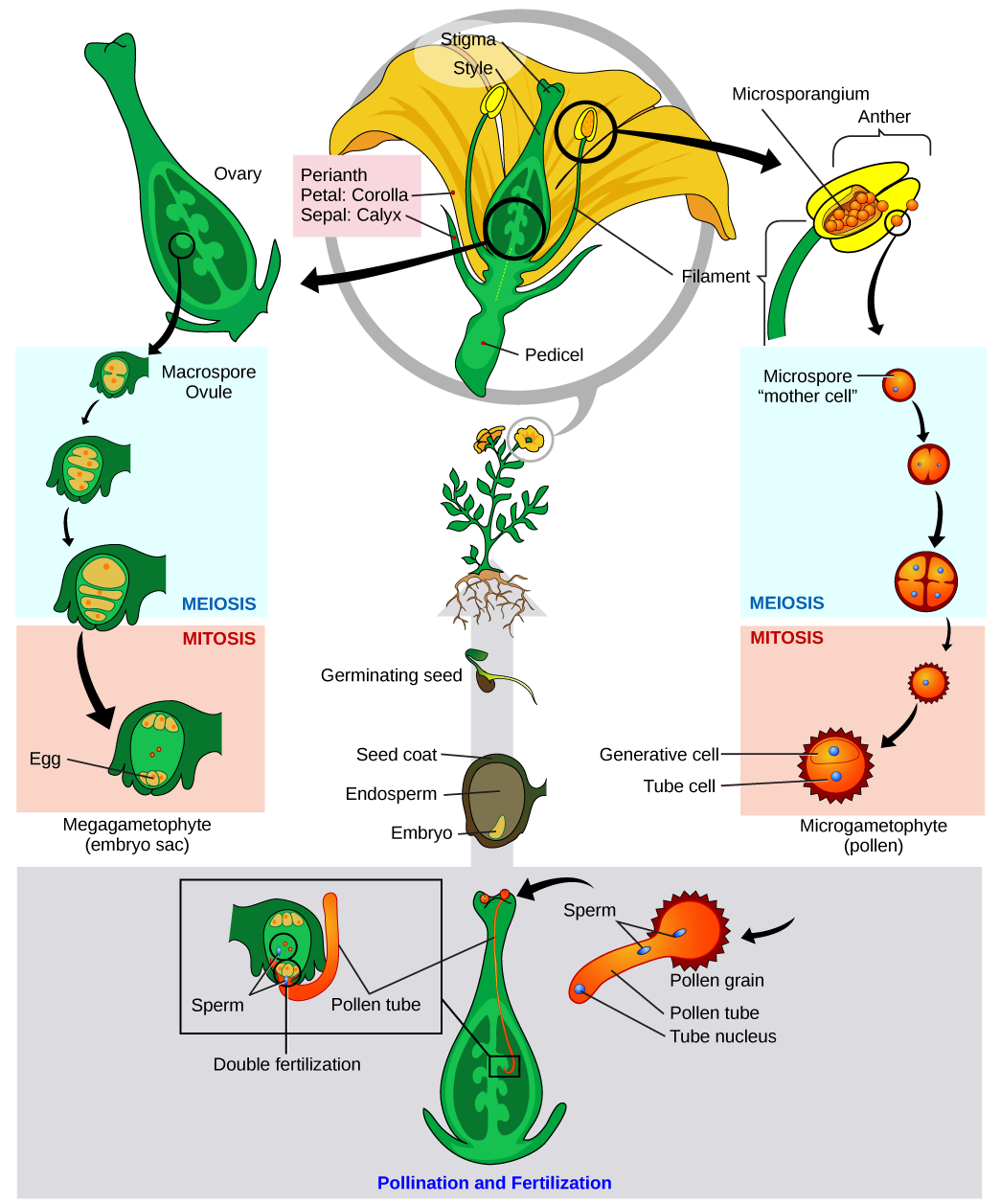| << Chapter < Page | Chapter >> Page > |
The seed forms in an ovary, which enlarges as the seeds grow. As the seed develops, the walls of the ovary also thicken and form the fruit. In botany, a fruit is a fertilized and fully grown, ripened ovary. Many foods commonly called vegetables are actually fruit. Eggplants, zucchini, string beans, and bell peppers are all technically fruit because they contain seeds and are derived from the thick ovary tissue. Acorns and winged maple keys, whose scientific name is a samara, are also fruit.
Mature fruit can be described as fleshy or dry. Fleshy fruit include the familiar berries, peaches, apples, grapes, and tomatoes. Rice, wheat, and nuts are examples of dry fruit. Another distinction is that not all fruits are derived from the ovary. Some fruits are derived from separate ovaries in a single flower, such as the raspberry. Other fruits, such as the pineapple, form from clusters of flowers. Additionally, some fruits, like watermelon and orange, have rinds. Regardless of how they are formed, fruits are an agent of dispersal. The variety of shapes and characteristics reflect the mode of dispersal. The light, dry fruits of trees and dandelions are carried by the wind. Floating coconuts are transported by water. Some fruits are colored, perfumed, sweet, and nutritious to attract herbivores, which eat the fruit and disperse the tough undigested seeds in their feces. Other fruits have burs and hooks that cling to fur and hitch rides on animals.
The adult, or sporophyte, phase is the main phase in an angiosperm’s life cycle. Like gymnosperms, angiosperms are heterosporous. They produce microspores, which develop into pollen grains (the male gametophytes), and megaspores, which form an ovule containing the female gametophytes. Inside the anthers’ microsporangia ( [link] ), male microsporocytes divide by meiosis, generating haploid microspores that undergo mitosis and give rise to pollen grains. Each pollen grain contains two cells: one generative cell that will divide into two sperm, and a second cell that will become the pollen tube cell.

If a flower lacked a megasporangium, what type of gamete would it not be able to form? If it lacked a microsporangium, what type of gamete would not form?
In the ovules, the female gametophyte is produced when a megasporocyte undergoes meiosis to produce four haploid megaspores. One of these is larger than the others and undergoes mitosis to form the female gametophyte or embryo sac. Three mitotic divisions produce eight nuclei in seven cells. The egg and two cells move to one end of the embryo sac (gametophyte) and three cells move to the other end. Two of the nuclei remain in a single cell and fuse to form a 2 n nucleus; this cell moves to the center of the embryo sac.

Notification Switch
Would you like to follow the 'Concepts of biology' conversation and receive update notifications?